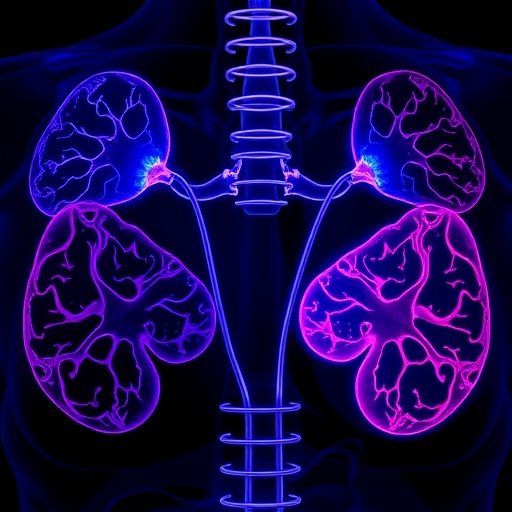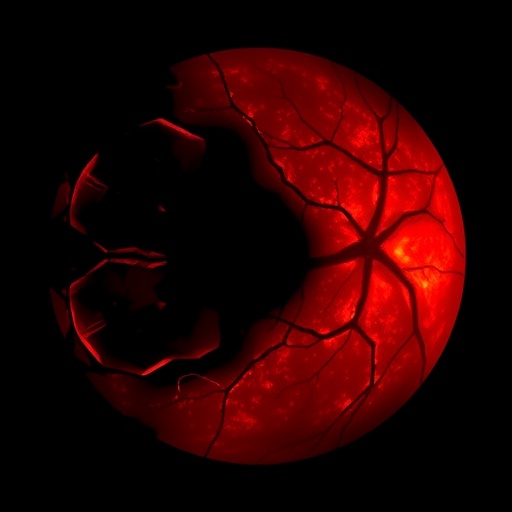Drexel researchers conduct study to see if creative arts therapies is next frontier for VR in healthcare.

Credit: Drexel University College of Nursing and Health Professions
The ever-expanding field of virtual reality (VR) has been used in health care settings like physical rehabilitation. It’s also made its way into therapy settings to reduce phobias and delusions. Could creative arts therapies be the next frontier for VR? Researchers from Drexel University’s College of Nursing and Health Professions in the Creative Arts Therapies Department conducted a study to see if VR can be used as an expressive tool in art therapy.
“Art therapy is founded on the idea that creative expression with an art therapist facilitates communication and problem solving, reduces inhibition, alleviates depressive symptoms and promotes personal development,” said lead author of the study Girija Kaimal, EdD, an associate professor in the College of Nursing and Health Professions.
VR can facilitate the exploration of imaginal worlds, which is a central tenet of the creative processes of both art and play. Tools like VR also have the potential to help patients with sensory, cognitive and motor-related disabilities who are unable to use traditional art media in therapeutic ways or who need alternative options for creative self-expression.
“With the availability of cost-effective VR solutions, we are seeing an increased adoption of these technologies in hospitals, clinics and healthcare facilities,” said Arun Ramakrishnan, PhD, director of Research Labs in the College of Nursing and Health Professions and co-investigator on this project.
In the study, five men and 12 women engaged in free-from, immersive VR art making for about 20 to 25 minutes.
The art therapy sessions were conducted with the HTC VIVE VR headset, remote control devices and Leap Motion controller running on a personal computer that could support a session in a virtual space. The software used was Tilt Brush by Google, to create 3D images in VR; Kodon, for virtual sculpting; and Nature Treks, for an immersive three-dimensional environment for relaxation.
After the session, participants were invited to save their artwork and talk about their experience with the art therapist.
“Most participants reported feeling energized and elated by the experience of being in an imaginal space that was unlike anything that existed in the material world,” said Kaimal. “Some were, however, disappointed by the lack of tangible, physical engagement with the medium and for a few, the experience was disorienting.”
Creative expression in VR reduced inhibitions, activated full-body movements and enhanced mood and creative play exploration among participants. They enjoyed the 3D virtual environment and being able to see the art from different angles and perspectives. It also challenged the participants’ perceptions of physical reality, traditional art making and art media.
The study did find some downsides to VR in art therapy. VR can be disorienting for those with cognitive, perception and/or inner ear issues. Researchers suggest further exploration of how these experiences might differ for individuals with clinical conditions, differences in physical and/or mental functioning and comfort with digital media.
The digital form meant it was easy to store and save the finished — or, in some cases, unfinished — art, but some participants mentioned it was dissatisfying to not have a tangible product.
“This study provides the groundwork for VR as an art therapy tool, especially as the technology becomes more sophisticated,” said Kaimal.
Researchers from the College of Nursing and Health Professions are continuing this work through several ongoing immersive reality projects in the College’s VR labs.
“These applications are not only improving health and wellness but also enhancing learning,” said Deborah Clegg, PhD, associate dean of research in the College of Nursing and Health Professions. “Drexel is on the cutting edge of incorporating this technology into the classroom to enhance education and ultimately health care.”
The study, “Virtual Reality in Art Therapy: A Pilot Qualitative Study of the Novel Medium and Implications for Practice” was published in the Journal of Art Therapy Association in September 2019. Co-authors include Katrina Carroll-Haskins and Marygrace Berberian, doctoral students; Abby Dougherty, PhD; and Natalie Carlton, PhD, of Drexel University.
Media Contact
Annie Korp
[email protected]
215-571-4244
Original Source
https:/
Related Journal Article
http://dx.




